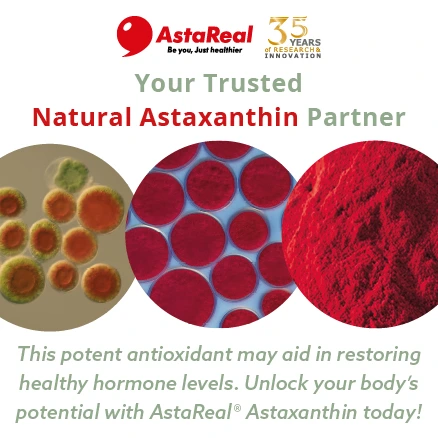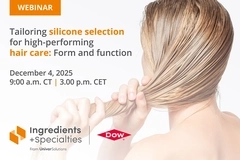BASF boosts biodegradable surfactant production to meet Asia demand
Key takeaways
- BASF expands APG production in Thailand to strengthen Asia’s sustainable surfactant supply.
- APGs provide biodegradable, biobased performance for personal and home care.
- BASF is also opening a US facility next year to strengthen its North America supply.
BASF has announced its expansion of production capacity for Alkyl Polyglucosides (APGs) in Bangpakong, Thailand, to strengthen regional supply and meet the growing demand for sustainable surfactants.
The move is a strategic response to bolster BASF’s geographical position in Asia and establish a more robust regional network.
APGs are mild secondary surfactants that are readily biodegradable and biobased, and derived from 100% natural and renewable feedstocks. According to BASF, APGs are highly versatile for formulations due to their non-ionic nature, sustainability, and high-performance profile.
BASF says this combination makes them adaptable for personal care products with other surfactants. The APGs are suitable for various markets, including beauty and home care.
“The APGs are bio-based surfactants that deliver mildness and skin compatibility, making them ideal for sulfate-free shampoos, facial cleansers, and baby care. They also have foam stability and effective cleansing, even in hard water,” Montserrat Franco Rojas, head of global communications for Care Chemicals at BASF, tells Personal Care Insights.
Rojas adds that the APGs also exhibit versatile compatibility with other surfactants, enabling the creation of balanced formulations without harshness.
“They help formulators overcome challenges like maintaining foam quality, sensory feel, and cleaning efficacy in sulfate-free systems.”
Navigating brands
BASF sources APG feedstocks, including fatty alcohols and glucose, from 100% renewable raw materials, adhering to sustainability principles.
Rojas details that key measures include RSPO-certified palm and palm kernel oil for all derivatives by 2025, as well as certified coconut and castor oil supply chains to improve farmer livelihoods.
“Additionally, use of mass balance approaches verified by ISCC PLUS and REDcert for renewable feedstocks. These initiatives ensure ecological and social responsibility while reducing greenhouse gas emissions,” says Rojas.
To support formulators switching from traditional surfactants to APGs, BASF offers digital tools, such as Surfactant Navigator, to optimize APG blends for foam, sensory properties, and stability.
 BASF offers digital tools, such as Surfactant Navigator, to optimize APG blends for foam, sensory properties, and stability.It also provides technical guidance and performance data demonstrating APG synergy with other surfactants, such as taurates and betaines.
BASF offers digital tools, such as Surfactant Navigator, to optimize APG blends for foam, sensory properties, and stability.It also provides technical guidance and performance data demonstrating APG synergy with other surfactants, such as taurates and betaines.
“The broad APG portfolio (Plantacare, Glucopon) for diverse applications in personal care and home care enables smooth reformulation while maintaining performance and meeting sustainability goals,” says Rojas.
Mary Kurian, president of Care Chemicals at BASF, adds: “This investment reinforces our commitment to being a reliable partner for customers across personal care, home care, and industrial sectors.”
“By expanding our APG production in Thailand, we’re enhancing regional supply capabilities, enabling faster, more flexible service, and supporting the growing demand for sustainable, high-performance solutions.”
The expansion will build on BASF’s current APGs sites in Düsseldorf, Germany, and Jinshan, China.
BASF will also complete another production facility for APGs in Cincinnati, Ohio, next year, enhancing the company’s capacity in North America.
Biosurfactants in focus
Biosurfactants have been dubbed “one of the most promising technologies” in the personal care industry.
Recent data from Innova Market Insights indicate that global personal care product launches featuring biosurfactant claims rose by 5% between April 2020 and March 2025. In particular, the skin care category surged, with a 37% jump in new launches.
Meanwhile, scientific advances for optimal formulations and sustainability profiles of surfactants are also increasing.
A Mexico-based study found an “optimal” formulation balance between anionic surfactants, a cleansing agent, and guar gum in hair care products. The balanced combination allows the mixture to adhere to wet hair, protect and condition it, and can be used as a formulation tool to enhance overall product performance.
Another recent study found that ionic surfactants in cosmetics make it more difficult to treat plastic-polluted water. Using daily personal care products, such as laundry detergents, soaps, shampoos, and cleansers, spreads surfactant pollution through wastewater, treatment plants, rivers, lakes, and drinking water.
Rojas concludes: “Reliable supply of biodegradable, sulfate-free, and low-carbon surfactants, helping brands meet stricter environmental and safety standards. This global footprint reduces risk from regulatory-driven supply disruptions and supports reformulation needs for eco-labels and green certifications.”














